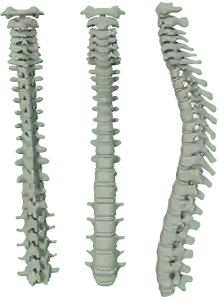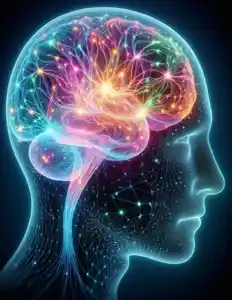Orthopedics | Last Updated: January 30, 2023
Straightening Out Spine Issues: Understanding Spine Medical Conditions And Spine Surgeries
The spine is a complex structure that can be affected by a variety of conditions, including degenerative diseases, injuries, and congenital abnormalities.
Some common complications and issues that can affect the spine include:
-

Herniated discs:
When the soft, gel-like material inside a spinal disc bulges out through a tear in the outer layer, it can press on nearby nerves and cause pain, numbness, and weakness in the legs or arms. -
Spinal stenosis:
This condition occurs when the spaces within the spine become narrowed, putting pressure on the spinal cord and nerve roots. It can cause pain, numbness, and weakness in the legs or arms. -
Degenerative disc disease:
As we age, the discs between the vertebrae can lose their height and flexibility, leading to pain, stiffness, and a decrease in mobility. -
Scoliosis:
This is a condition in which the spine is curved to one side, which can lead to pain, difficulty breathing, and uneven shoulders. -
Fractures:
Trauma or osteoporosis can cause fractures in the spine, which can lead to pain, numbness, and weakness in the legs or arms.
Treatment for these conditions can vary depending on the specific issue, but may include physical therapy, medications, spinal injections, and in some cases, surgery. It is important to consult a doctor or spine specialist to determine the best course of treatment for a particular condition.
There are many different types of surgeries that can be used to treat conditions affecting the spine.
Some common types of spine surgeries include:
-
Discectomy:
This is a procedure to remove a herniated disc that is pressing on a nerve. It can be done through a small incision in the back or through a minimally invasive approach using a microscope or endoscope. -
Laminectomy:
This is a procedure to remove part of the lamina, the bony covering of the spinal cord, to relieve pressure on the spinal cord or nerve roots. It is commonly used to treat spinal stenosis. -
Fusion:
This is a procedure to join two or more vertebrae together to prevent movement and reduce pain. It is commonly used to treat conditions such as degenerative disc disease, scoliosis, and spinal fractures. -
Vertebroplasty/Kyphoplasty:
These are procedures used to treat vertebral fractures caused by osteoporosis. A cement-like material is injected into the fractured vertebra to stabilize it and reduce pain. -
Decompression:
Decompression surgeries remove the pressure on the nerve by removing the bone or soft tissue that is causing the pressure. -
Artificial Disc Replacement:
In this procedure, a damaged disc is removed and replaced with an artificial one.
It is important to note that not all surgeries are suitable for all patients, and that the best treatment plan will depend on a patient's individual condition and overall health. It is always recommended that you consult with a spine specialist to determine the best course of treatment.






